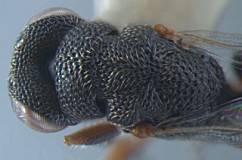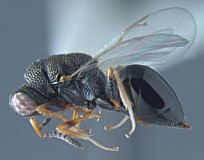Eurytomidae
The species attacking fruit-infesting tephritids have generally been characterized as polyphagous. Caution should also be exercised when attempting to determine hosts of Eurytoma since some species are known to be phytophagous.
Both Eurytoma oleae Silvestri and Sycophila aethiopica (Silvestri) have been reared from cultivated olives in South Africa (Neuenschwander 1982). Both Silvestri (1915) and Neuenschwander (1982) noted that Eurytoma oleae developed on the seeds of olives and is thus phytophagous. Sycophila aethiopica, on the other hand, is most likely to be a parasitoid of seed-infesting chalcidoids, as is Eurytoma varicolor Silvestri (Silvestri 1915).
Eurytoma martelli, attacking olive fly in Crete, has been studied by Neuenschwander et al. (1983), among others. It is a well-studied species in the Mediterranean region (e.g. Luigifilippo 1967)).
Members of the genus Eurytoma are exceptionally difficult to identify to species, but the family can be readily recognized by the quadrate, usually deeply pitted pronotum (Fig. 1) and general habitus (Fig. 2).


